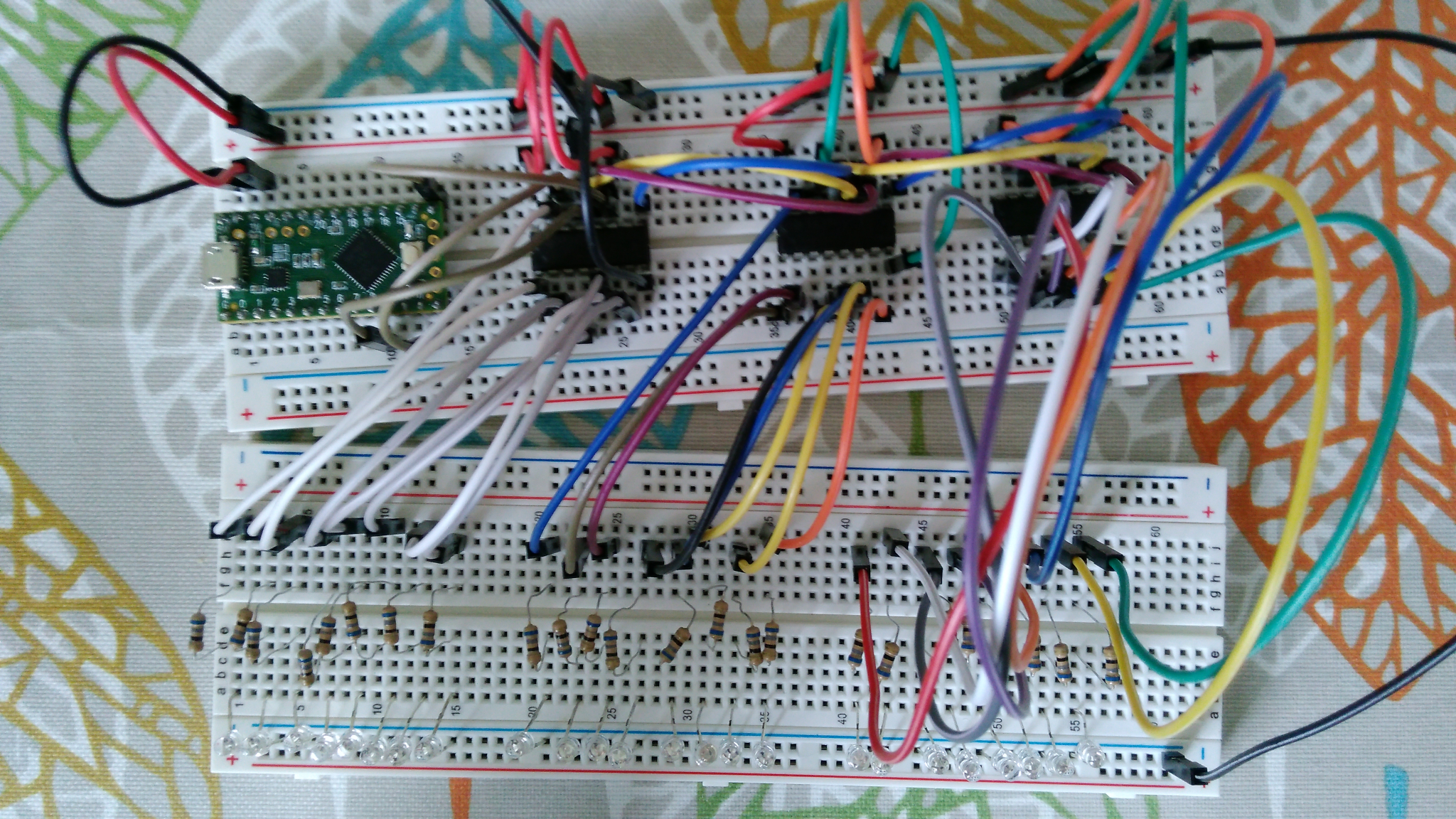Three 74HC595 chips will be used to drive the 24 columns of the keyboard's button matrix. I built a prototype on breadboard to ensure the circuit design and code were correct, As this was just a test of the columns, LEDs are used instead of buttons.

Code:
// -----------------------------
// teensy 24 led columns -
// cycles through to light up
// one LED at time
// -----------------------------
// connections to 74hc595
int latchPin = 8;
int clockPin = 13;
int dataPin = 11;
// count
int count = 1;
int countTotal = 24;
// shifting values
byte patterns[8]={
B00000001,
B00000010,
B00000100,
B00001000,
B00010000,
B00100000,
B01000000,
B10000000
};
// temp values
byte tempA = B00000000;
byte tempB = B00000000;
byte tempC = B00000000;
void setup() {
// put your setup code here, to run once:
// set serial pins to output
pinMode(latchPin, OUTPUT);
pinMode(dataPin, OUTPUT);
pinMode(clockPin, OUTPUT);
}
void loop() {
// put your main code here, to run repeatedly:
//update and reset
if (count<9){
tempA = patterns[count-1];
}else{
tempA= B00000000;
}
if (count<17 && count>8){
tempB = patterns[count-8-1];
}else{
tempB= B00000000;
}
if (count>16){
tempC = patterns[count-16-1];
}else{
tempC= B00000000;
}
//write to shift registor
digitalWrite(latchPin,LOW);
shiftOut(dataPin, clockPin, MSBFIRST, tempC); //3of3
shiftOut(dataPin, clockPin, MSBFIRST, tempB); //2of3
shiftOut(dataPin, clockPin, MSBFIRST, tempA); //1of3
digitalWrite(latchPin, HIGH);
//wait
delay(500);
//loop variable
count++;
if (count>24){
count=1;
}
}
 Redgeneral
Redgeneral
Discussions
Become a Hackaday.io Member
Create an account to leave a comment. Already have an account? Log In.